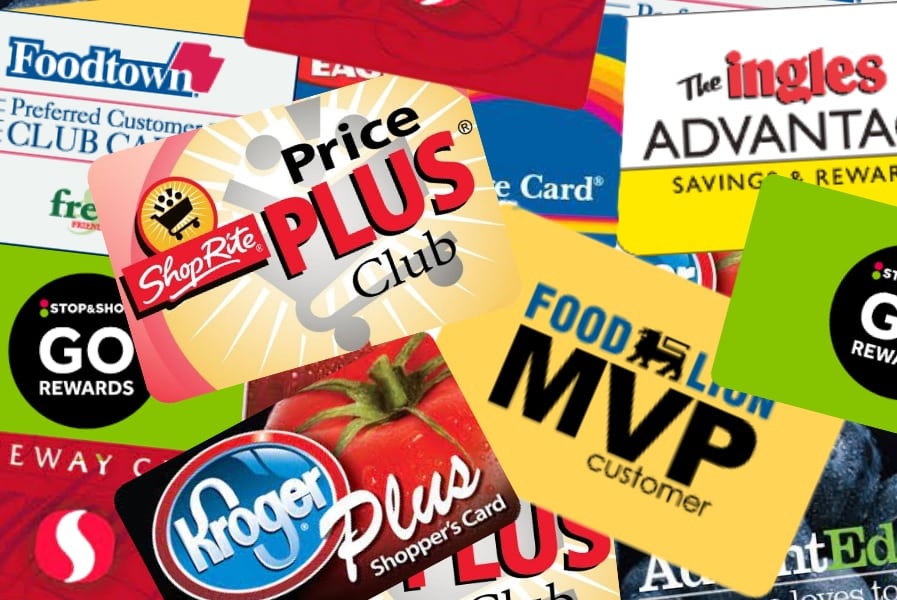
Lawmakers are already considering whether grocery stores’ digital coupon programs are unfair and discriminatory to those who lack access to digital devices. Now, government regulators are considering whether grocery loyalty programs are unfair to those who aren’t members.
The difference, for now, is that the debate over digital coupons is happening here in the U.S., while the probe into grocery loyalty programs is happening in the UK. But with price discrimination at the grocery store becoming a newly-hot topic among legislators and regulators, it’s not out of the question that grocery loyalty programs could become the next target of an American investigation as well.
An increase in the use of grocery loyalty programs means, in many cases, “that price promotions are only available to people who sign up for loyalty cards,” the UK government’s Competition and Markets Authority (CMA) said in a statement. “This raises a number of questions” about the financial impact on non-loyalty members. So the regulatory agency plans to launch a review this coming January into the use and effects of loyalty program pricing.
Since July, the CMA has been taking a close look at food and grocery pricing and the impact of inflation on consumers. Its most recent report accuses brand manufacturers of raising prices more than their own cost increases, which it says is contributing to inflation, boosting manufacturers’ profits while costing shoppers more.
The agency says it has also “heard from leading brands” that any future price reductions are likely to come in the form of more promotions, rather than a cut in regular prices. And many retailers only make these promotional prices available through their loyalty programs, which the CMA says “is likely to lead to a growing prevalence of two-tier prices in these stores.”
Tesco, the UK’s largest grocery chain, has gone even further. It “told us that all in-store promotional discounts require a Clubcard to access,” the CMA said. So if you shop at a Tesco store without a loyalty program membership, you’ll be paying full price, every time.
Not only could this be problematic for non-loyalty members, but the CMA says the prevalence of promotional prices available only through loyalty programs “could lead to a more complicated environment for consumers to compare and choose the best deals.” Grocery retailers do not always “display unit prices for promotional deals,” which makes it “harder for consumers to make like-for-like price comparisons.” Shopping around for the best prices can be difficult and time-consuming enough as it is. But not being able to accurately determine which grocery store has the best prices makes it even more challenging.
American lawmakers’ focus on digital deals does involve loyalty programs to an extent. Several state lawmakers, and most recently a member of Congress, have sought ways to ensure that shoppers without smartphones or internet access don’t miss out on digital coupon discounts. But their efforts could just as easily apply to shoppers who are not members of their stores’ loyalty programs. You typically have to sign up for your store’s loyalty program in order to access their digital coupons, and many promotional prices that grocery stores advertise these days have to be activated digitally, within the store’s loyalty program. So shoppers who are digitally-disengaged are just as likely to end up paying more for their groceries, as shoppers who are reluctant to hand over their personal information in order to join grocery loyalty programs.
The CMA’s inaugural report over the summer found that 90% of UK consumers are already members of at least one loyalty program. But they may not be members of all of them. And if one store’s prices for loyalty program members appear lower because the store makes it difficult to compare promotional prices with a competing store’s deals, then the agency says that’s not a good deal for shoppers. The results of the group’s investigation could help determine whether stores that claim to be rewarding you for your loyalty, are really just rewarding themselves.











The difference being, ANYONE can go into the store and get these store cards quite easily.
Even if you are travelling, you can get one for a store not near you.
Not like having to have access to the internet or a phone to use them as some of the coupon programs require (though some stores are smart enough to have a way for people to load those coupons in store as well).
Well put, Billy. I say let the consumers vote, and I’m sure it will be a landslide – we do want loyalty programs. The article implies that they contribute to inflation. I think that is simply ridiculous. Without them, we may pay higher prices on average. The loyalty programs contribute to competition between grocery stores – how could that be negative for consumers?